#Khensu
Photo


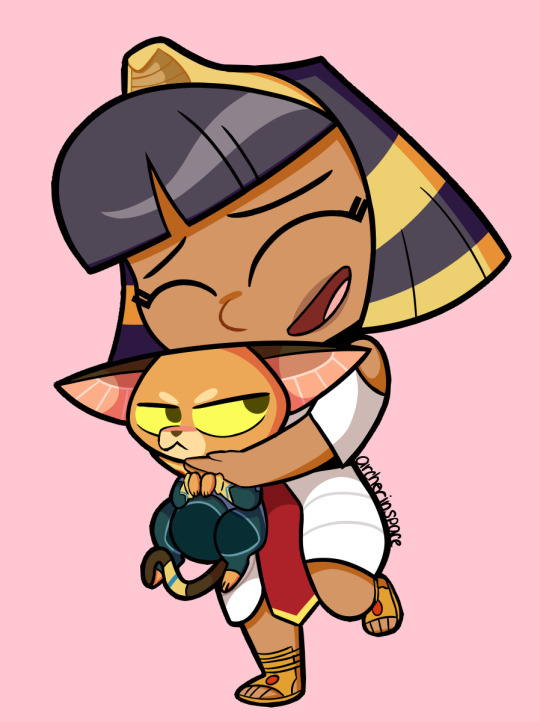
Brian
Akila
43 notes
·
View notes
Text

Khensu (Khonshu) Egyptian god of the moon and protector of travelers! 🌙🌟
He is one of my patron gods and I made a eldritch design of him for fun that ended up being a full print! I believe he quite likes it lol!
Also an alt version with text!
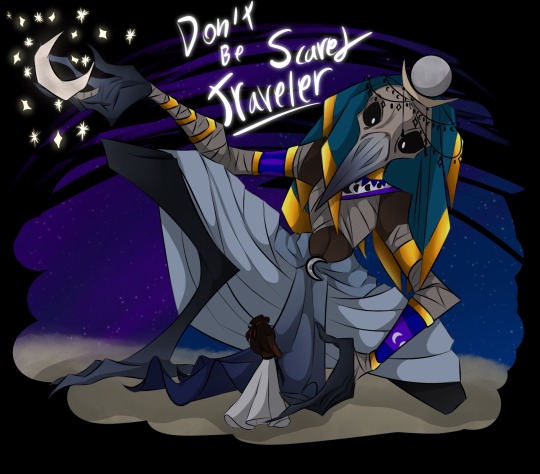
18 notes
·
View notes
Text
In this 29th part of "An Unlikely Alliance Against Evildoers", Cleo feels she doesn't have as much of a purpose, while she is dating Akila. Khensu is heading PYRAMID, and becomes an ambassador to Earth, where her friendship with Connie begins to grow. This fic also witnesses the reappearance of Bonnie and Marcy.
#cleopatra in space#cleokila#akila theoris#khensu#marceline x princess bubblegum#marceline the vampire queen#marceline x bonnibel#marceline x bubblegum#bubbline#princess bubblegum#bonnibel bubblegum#marceline abadeer#marceline#crossover#an unlikely alliance against evildoers#cleo x connie#connie maheswaran#steven universe#adora x catra#catradora#pearl x adora#adora x pearl#romance#lgbtq
2 notes
·
View notes
Text
Is "Cleopatra in Space" really talking about information deficits in libraries?
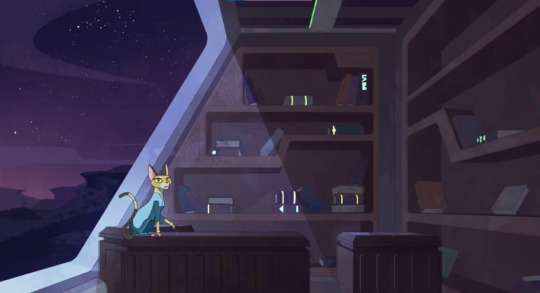
Khensu presents the Ancient Egypt special collections room
Back in August 2020, when I had begun to write reviews of libraries in animation, I wrote that in the episode "Clubbing," after Cleopatra, her friends Brian and Akila, and her teacher/mentor Khensu go to the Ancient Egypt section of the school's library, equivalent of a special collections, that Cleo, dismayed by the amount of records on Ancient Egypt, offsets a positive depiction of libraries by sucking all the electricity of the school and nearby Mayet City into her body, resulting in a power outage. While that seems like a valid assessment, I'm not sure if what I said next is correct: "The message of this moment is that libraries need adequate resources and support to assist the communities they serve—otherwise there will be information deficits that put patrons at a disadvantage." I decided to re-examine this scene, especially since I was encouraged to add this by Lindsey Simon of I Love Libraries when I wrote this post for that website. [1]
This post is reprinted from Pop Culture Library Review and Wayback Machine.
The scene begins when Cleo goes with her friends Brian and Akila to the special collections room after hours. At first, Cleo is excited to see what they have, but there are only a few dozen artifacts, fragments of scrolls, and books. Khensu shows her how to access all of it and hands her a scroll, the only thing that mentions her by name. Akila tries to cheer her up, but it doesn't work, as she thought she might find something about herself. She is amazed to see they have a statue of her dad. As she begins feeling emotions for him, she starts glowing pink, giving off a "weird energy signature," floating, sucking the power out of everything, including the shield protecting the city from asteroids. Following that, they run out of the library to avoid the asteroid attacks, ending the scene in the library, and they never end up returning to that room at any point in the series.
It is clearly a stretch and overreach to say that this scene somehow indicates that "libraries need adequate resources and support to assist the communities they serve" and that if they don't there "will be information deficits that put patrons at a disadvantage." This scene, prior to the asteroid strikes, is indicating the importance of preservation and value of information. I also incorrectly termed this the "library’s Ancient Egypt section," with physical records in a trunk. While they can be accessed as holograms, it is a whole room of information, and it probably is not accessible to the general student body, as they accessed it after-hours. As such, the information inside is restricted, perhaps to only the professors of PYRAMID Academy, not the students who actually attend the academy. It is possible it may be accessible to specific students, like Callie, who heads the Ancient Egypt club at this intergalactic high school, but that can't be confirmed.
Furthermore, Cleo's use of the pink power is not as much a dismay at the records that are contained within the room. Rather it is a longing for her father who she will likely never see again, and her home. The imagery and symbolism of this scene makes this interpretation the right one, rather than the one I stated in I Love Libraries at the time. Unfortunately, with the attack in the final episode of the series by Octavian's forces, this room was likely damaged during the fighting, and it is not known how much of it remains.
On the other hand, there is clearly a lack of information in this room, as Cleo is acutely aware of. There probably isn't much in terms of weeding that is going on in acquiring materials for this room, i.e. the removal of items from a collection. Rather, there is careful acquisition since the villainous Octavian has destroyed much of the galaxy's information in what they call The Blight, while likely keeping copies of this information for himself. Obviously it is not mentioned in this episode, but the upkeep of the room itself is undoubtedly incorporated into the budget of the PYRAMID library.
Unlike some other libraries, this library is about knowledge and learning, not some institution that is acting as a "profit center," as some like to frame libraries and make them synonymous with business that is trying to gain a profit. That is something that libraries, especially those which are public or non-profit, should not be doing, even if they are encouraged to think that way in order to be "competitive" or speak like corporate CEOs. In the end, while Cleopatra in Space is not talking about information deficits in libraries, it connects to other library themes and remains relevant in terms of representation in popular media.
© 2022 Burkely Hermann. All rights reserved.
Notes
[1] My original draft of the post that I submitted to I Love Libraries did not include this line, only noting that the scene in "Clubbing" was two-and-half minutes long, ended when Cleo and her friends have to avoid asteroids crashing into the school.
#cleopatra in space#i love libraries#corporate speak#pop culture#libraries#ceos#cleopatra#cats#khensu#asteroids
4 notes
·
View notes
Text
Khonsu, God of the Moon
𓐍𓈖𓇓𓅱

#khonsu#khensu#egyptology#egyptian mythology#egyptian gods#ancient egypt#kemeticism#kemetism#kemetic#moon
5 notes
·
View notes
Text
Round B1.2
Phosphophyllite (Houseki no Kuni) VS Khensu Kasaar (Cleopatra in Space)


[ID: An image of Phosphophyllite, who is a pale humanoid with mint green hair and wearing a black short-sleeved uniform. Khensu is a cat with orange-brown fur, wearing a blue uniform and gold jewelry on his neck, wrists, and tail. /end ID]
Phos:
Any of the gems would do, technically, but Phos in particular seems most appropriate because (manga spoilers) they are now officially "human", unlike all of the others.
Khensu:
i think hes a lesbian. idk me and my brothers have been watching the show and de idec he was. we have a looong list of charaters we think are lesbians so get ready im gonna submit somany. also hehe kitty cat
#phosphophyllite#houseki no kuni#land of the lustrous#hnk manga spoilers#khensu kasaar#cleopatra in space#gqs tourney#genderqueer swag fight#round 1#polls
11 notes
·
View notes
Text

Khonsu 🌕
Egyptian Moon God
Talon Abraxas
(Khons, Chons, Khensu) was a god of the moon and time. His cult center was at Thebes where he was part of a triad with Amun and Mut. He was one of the companions of Thoth (who was also associated with the moon and the measurement of time).
45 notes
·
View notes
Text
Deity Archives: Khonsu
Also known as: Chons/Khons, Chonsu, Khensu, Khenshu

Different depictions of the moon god Khonsu, image from TheMarySue
Depictions
Khonsu himself is usually depicted as the son of Mut and Amin and shares their major worship center of Thebes. However, there were also other affiliations, and sometimes he'd be claimed as the son of Sobek and Hathor as depicted on the Kom Ombo Temple. Khonsu is also associated with Osiris, Shu, Horus, and Thoth with the latter most often being assimilated with Khonsu. Khonsu typically appears as either a young man with the side lock hair of youth and wearing his lunar headdress, or as a falcon-headed man with a lunar headdress.
Epithets
Embracer
Pathfinder
Defender
Decider of the Lifespan
The one who lives on hearts
Who traverses Egypt in order to rule the two halves in his great name
Pendulum of Heaven
Divider of Months
heart of Ra, Who knows all things
the lion, great in strength
He who makes slaughter of the foes of the wadjet eye
Khonsu the Child
Khonsu the Provider
Spellcaster of Thebes and Chaser of Demons
Associations
hawks
falcons
crescent moons
opals
the color white
baboons
side-lock of youth
Areas of Influence/Invoking
fertility
childbirth
protection against wild animals
protection for nighttime travel
healing
combating against negative spirits and presences
time
Overview - History and Mythos
Part 1: The Cannibal Hymn and the Bentresh Stela
Khonsu is considered to be the personification of the moon as it travels across the sky. In the Pyramid Texts' "Cannibal Hymn," he aids the deceased pharaoh in slaying enemies and deities in the underworld to make the pharaoh stronger. It wasn't until the New Kingdom era that Khonsu was recognized as not only a god with this dark aspect of consuming souls, but also as a god of protective positive aspects as well. Such dominions include childbirth and healing ailments, and it is said that Khonsu "causes the crescent moon to shine, to make women conceive, to enable cattle to become fertile, and for all nostrils and throats to be filled with air." He was also often invoked for protection during nighttime travel and for protection against wild animals.
On a stela that was found in Thebes, known as the Bentresh Stela, there is an inscription that tells the story of how Ramses II had married the king of Bakhtan's daughter, Nefrure, as a treaty and diplomatic venture and went on to invoke Khonsu to save his sister-in-law's life while away. In summary, when Ramses II returned to Egypt after this marriage, a messenger was sent to him stating that Nefrure's sister, Bentresh, had fallen ill from a spirit possession. Ramses II then commissioned a statue to be made of a form of Khonsu (either Khonsu the Provider or Khonsu Spellcaster of Thebes and Chaser of Demons). This statue would be sent to his wife and sister-in-law; when received, it was said that Bentresh was instantly cured of this possession.
Translations of the Bentresh Stela heavily imply that Khonsu could not only be presented in multiple forms and faces but that these forms are separate and can interact with one another. The most recognized forms are Khonsu pa-khered (Khonsu the Child), Khonsu pa-ir-sekher (Khonsu the Provider), Khonsu heseb-ahau (Khonsu, Decider of the Lifespan), and Khonsu em-waset Neferhotep (Khonsu in Thebes-Neferhotep). In the stela, the Khonsu that had gone to Bakhtan had accepted the offerings given to him by the king and had stayed there for about a year. However, this form of Khonsu (most likely Khonsu, Spellcaster of Thebes and Chaser of Demons, though other sources say Konhsu the Provider) had eventually gone back to Egypt and kept none of the offerings given to him; rather, he had given the offerings to the Khonsu in Thebes-Neferhotep. It was also shown that, before the visit, Khonsu in Thebes-Neferhotep and Khonsu the Provider conversed by the request of Ramses II and gave the latter Khonsu magical protections as seen here:
"His Majesty then reported to Khons-in-Thebes-Neferhotep, saying: 'Good Lord, I report to you concerning the daughter of the prince of Bakhtan.'
Then Khons-in-Thebes-Neferhotep proceeded to Khons-the-Provider, the great god who expels disease demons.
Then His Majesty said to Khons-in-Thebes-Neferhotep: 'Good Lord, will you turn your face to Khons-the-Provider, the great god who expels disease demons, making him go to Bakhtan?'
A very strongly approving nod. Then His Majesty said: 'Give your magical protection to him, and I will let His Majesty go to Bakhtan to save the daughter of the prince of Bakhtan.'
A very strongly approving nod of the head from Khons-in-Thebes-Neferhotep. Then he created magical protection for Khons-the-Provider-in-Thebes four times."
-- Except from the Mark-Jan Nederhof translation (2006.)

The Bentresh Stela
Top left: a priest offers incense to a barque carrying a form of Khonsu known as Khonsu-Spellcaster-of-Thebes-and-Chaser-of-Demons. Top right: Ramses II, presents incense to a bargue carrying a form of Khonsu known as "Khonsu-in-Thebes-Neferhotep." Inscription beneath tells the story of Ramses II and the Bakhtan princess.
Karnak, Egypt, 21st Dynasty. Paris, Musee de Louvre, C 284.
It's interesting to note that though this stela tells of Ramses II from the 19th Dynasty, the stela itself dates back to the 21st Dynasty. Thus this inscription is a story that is thought to have happened in the past.
Overview - History and Mythos
Part 2: Khonsu's role in Wep Ronpet
A classic mythology concerning Khonsu sees towards his domains as the ruler of time, months, and of the night. The starry goddess, Nut, had become pregnant with her brother Geb, but Ra who feared anyone taking his throne as king of the gods forbade Nut from birthing on any day of the year. Nut then asked for Thoth to help, and so the god of wisdom approached the god of time and of the moon, Khonsu, to gamble on a game of Senet: each time that Khonsu would lose, he would have to give Thoth some moonlight. Thoth, after winning as much as he needed, then crafted the moonlight to form five extra days at the end of the 360-day year. Because these extra five days were not considered to be part of the year, Nut was able to conceive a child on each of those five days. These children were Osiris, Horus the Elder, Isis, Set, and Nepthys. From this story, we have our basis for the holiday Wep Ronpet that some modern Kemetics celebrate sometime in August.
Resources
Ancient Egypt Online - The Temple of Kom Ombo
Ancient History Encyclopedia - Bakhtan Stela
Bentresh Stela translation by Mark-Jan Nederhof
Kemetic Orthodoxy - Khonsu
Neoalexandria - Khonsu
The Complete Gods and Goddesses of Ancient Egypt by Richard H. Wilkinson p 113
Plutarch's Moralia (Loeb)/Isis and Osiris. Translated by Babbitt, Frank. p. 12.
9 notes
·
View notes
Text
there’s sound. and then there’s psychic sound
And there’s a difference. There is a difference between the two. Sound exists at an energetic level first before it manifests as literal sound. and I can hear sound before it manifests. because I am The Unmanifest.
Finding silence has been so important in my journey as a psychic. It’s so important that we access true silence. The times when I didn’t have silence over a long period of time have been the times where I was most deranged. Where i felt I had the least handle over my life. Most like there’s something horribly horribly wrong with me that i can’t fix. it’s like i’m being attacked by something i can’t see. and that’s what psychic sound will do to you. I frequently feel a demonic presence every time I hear the sound of someone flipping through IG stories with the sound on loud. and i think that’s related. I think that’s deeply related. psychic sound messes you up. or it can, rather. too much of it will make you wanna off yourself I am not joking. you need psychic silence. as a psychic, an intuitive, a Sensitive, a holder of the Clairs, you need psychic silence. that goes beyond just regular human silence, which is the auditory perception of no sound decibels. you need a space where people or things aren’t generating thought forms. because the people around you may not be making any physical noise, but they may be making a lot of internal noise. a lot of psychic noise.
No silence is criminal in the psychic experience. It’s disgusting. Truly where demonic attachments are formed. one of my favourite occult tweeters, Khensu the Reminder (@KNeferhetep), said something about how a house that is never silent is demonic, always having the TV on etc.
You need silence for cleansing, for peace. And to know The Truth.
God bless you on your journey into psychic silence.
#psychic sound#psychic#12th house#12th house stellium#12th house moon#12th house mercury#12th house saturn#clairaudience
22 notes
·
View notes
Photo

Khensu is Cleo’s teacher at the PYRAMID Academy, and believer of the prophecy. He is voiced by @sendhil_rama who played Mohinder Suresh in #heroes !!! - From the Dreamworks’ TV show “Cleopatra In Space”. @dreamworks @dreamworkstv #dreamworks #dreamworksanimation #cleopatrainspace tv series #streaming on @hulu #hulu and @peacocktv #peacock #peacocktv #titmouse #characterdesign #visdev #visdevart #mainpack #graphicbible #visualdevelopment #btod #bertrandtodesco #artistsoninstagram #space #cleopatra based on the bestselling comicbook by @mikemaihack #cat #cats #kitty #kitten #chat #khensu (at Los Angeles, California) https://www.instagram.com/p/CnCn_EwJJZo/?igshid=NGJjMDIxMWI=
#heroes#dreamworks#dreamworksanimation#cleopatrainspace#streaming#hulu#peacock#peacocktv#titmouse#characterdesign#visdev#visdevart#mainpack#graphicbible#visualdevelopment#btod#bertrandtodesco#artistsoninstagram#space#cleopatra#cat#cats#kitty#kitten#chat#khensu
31 notes
·
View notes
Text
A bit on Khonsu
Also: Khons, Khensu, Chons, Khonshu
Pronounced: Khansaw, Khansu, Xanzaw
Meaning: One who travels
Ancient Egyption god of the moon and protector of those traveling by night, Khonsu was also known as an exorcist, healer, and a God of fertility. He marked the passaged of time along with Djehuty/Thoth, and was instrumental in the creation of new life in all living creatures. Khonsu has been known to protect against wild animals and aid in healing.
Khonsu is most often depicted as a younger man in mummy wrappings with green skin, a kings beard, and a menat necklace. He has also been shown with a hawk or falcons head, and less often as a goose, ram, or two crocodiles. He holds the Was scepter in his hand, wears the side-lock commonly used to show youthfulness, and the scribes cap. His headdress has a full lunar disk sitting atop a crescent moon.
In the Old Kingdom Khonsu was described as a blood-thirsty deity and known to be terrifying and violent. In Pyramid Texts of Old Kingdom pyramids, he was said to help kings who had died and become deified find other gods before eating their hearts, and was called "Khonsu who lives on hearts".
Planet:
Moon
Colors:
White
Blue
Symbols:
Number 9
Snakes
Falcon
Baboon
Lotus
Offering Items:
Moonstone
Moon items
Game boards, Senet
85 notes
·
View notes
Photo
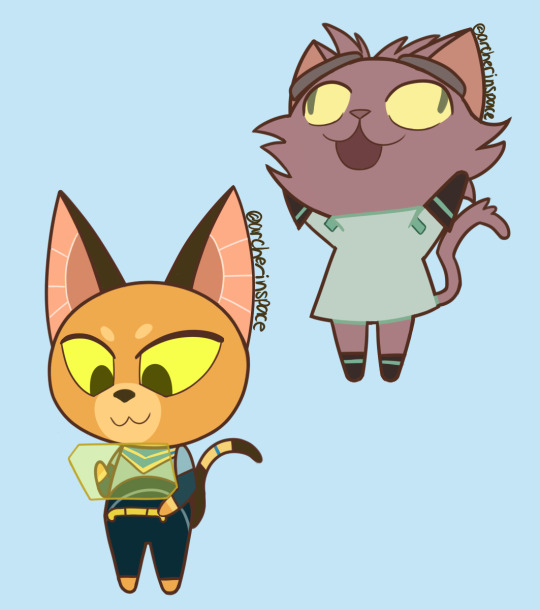
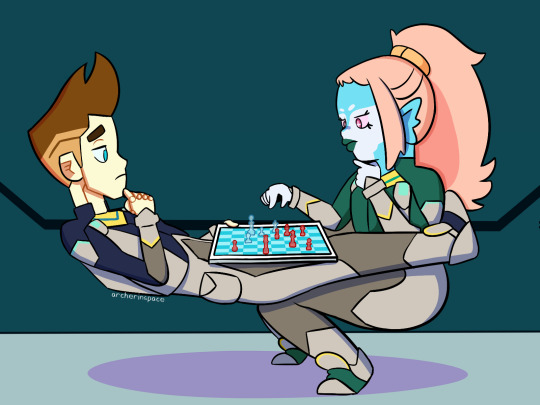
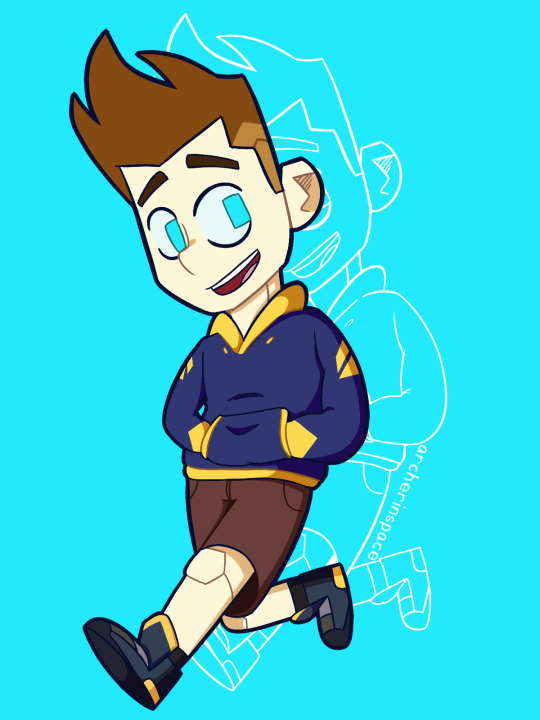

👑🌠Cleopatra in space 🌠 👑
(ft. everyone but cleo lmao)
16 notes
·
View notes
Text
Art rendition of an interaction I had with one of my patron gods Khensu/Khonshu last night cause I wasn’t sleeping lol

#Kaii’s art#khonsu#khonshu#khensu#he has so many names#just why#kemetic#digital art#just a sketch#Kaii’s pagan stories#pagan witch#pagan
9 notes
·
View notes
Text
Genshin Impact: Daughter of Sun and Moon. Love letter to Candace (part 1)
My sympathy for Candace, whom I currently main, started very bittersweet. First, I don't usually play hydro characters. Second, I didn't really like her clothes' design. It was the choice of voice actress in Chinese dubbing that became a nail in the coffin to my decision and influenced me to wish after her. The rest is history.
Regrets? Only one. Candace's presence feels narrow in quests. She deserves more attention.
From surface level of analysis, she doesn't stand out. Another character to pat your head in act of almost motherly love and be the voice of reason everyone needs. Seen plenty of these in almost every media I've ever consumed. But once I started connecting the dots…

Candace's relationship with grey heron is greater honor to her character than players usually grasp. That bird, called bennu in its prime, has held incredible importance to Ancient Egyptians. They saw the grey heron as a vessel for the soul of god of Sun, Ra, thus taking it as a symbol of immortality, never-ending cycle of death and rebirth. The Ba of Ra in Heliopolis, the emerald of Egypt. I found out there are two versions about origin of bennu:
It has formed itself from the flame of sacred tree around the temple of Ra.
It came into this world through the crack in Osiris' heart.
These legends are hidden within following traits — that Candace acts independently, although she's bind to stay in Aaru Village all the time, and that she's a descendant of King Deshert, Al-Ahmar (The Red One). Being chosen for the role of village's guardian at the age of eight is cherry on top. In numerology number eight represents infinity. Life's loops.
Bennu itself is portrayed with two long feathers coming from its head and atef crown of Osiris. Sometimes the crown is replaced with Sun disc.

Source: r/Genshin_Impact_Leaks.
Candace's ponytails subtly resemble feathers I mentioned, and her hairpiece references to the Sun disc, however its shape is of a crescent Moon. The Egyptians interpreted Sun and Moon as divine presence in a form of light that gave them the feeling of warmth and safety.
While the Sun referred to birth and energy, the Moon was an attribute of Khonsu (from the word khenes — to travel, to cross), God of Time and Justice. He was treated as a patron of night travelers, wild animals and a healer. Not to mention his fame for being a personification of balance.
One of Khonsu's forms was named Khensu-pa-khart or Khonsu-pa-khered — Khonsu the Child. It was supposed to rise as a crescent Moon, bringing light each month as a symbol of hope and regeneration.
Before Khonsu became a protective deity, his description in The Cannibal Hymn suggests a bloodthirsty being — loyalist to King of the Dead (Osiris), who'd capture and devour other gods with his help.
I'm more than convinced a huge part of Candace's personality is inspired by Khonsu. Even her splash art reminds me of Moon in waning crescent phrase. She takes great care of her people and greets temporary visitors with utmost hospitality. However, she's no stranger to cruelty if it justifies the means, as I've seen in the Archon quest. Candace balances between kindness and violence. Her threats left unspoken.

Black headband with golden eyes front and back might be a reference to the Eye of Ra and the Eye of Horus.
The first one — what's interesting — is a counterpart to violence god Ra has committed; a sign of femininity, calmness and rationality. Some tales present it as a separate goddess who, although shields Ra against his enemies, may act either as consort, sibling or daughter of the God of Sun. She's the fierce lioness bringing peace upon dispute saw by men, just like Candace.
The Eye of Hours is associated with protection, which Candace has been performing since she was a child. Horus lost his eye as a result of conflict with Set, God of Desert, and later had it restored with help from other deities. At some point, he offered this particular eye — blessed with restoring abilities — to his deceased father, Osiris, to resurrect him in the afterlife. Because of that, the Eye of Hours was — and continues to be — broadly used as protective amulet.
Moreover — in compassion to Candace's heterochromia — according to various texts, Horus' right eye symbolized the Sun (quintessence) and left eye the Moon (resilience). Woman's eyes are mirrored. The difference, I suppose, is a reminder that while Candace's lineage comes from King Deshert himself, she was born of mortal world.
At the beginning of our friendship, she seems quite distrustful of the Traveler and, asked about heterochromia, bluntly responses:
...Strange? I'm not sure what you mean, both amber and blue are fairly common eye colors, I believe...
However, her stance changes over time:
I'd really love to look into your future with my amber eye, if I could... Something tells me everything would be golden... somewhere between the color of sunlight and honey. A color filled with hope. Your journey will be a smooth road ahead. I give it my blessing.
Candace's not only fully aware of her heritage and [hidden] abilities — she implies she knows the Traveler is a supernatural being who descended to introduce Teyvat to Golden Age, and gifts them spiritual protection.
In some cultures it is believed people with heterochromia are allowed to glimpse into Heaven and Earth, past and future, simultaneously through differently colored eyes. For example, in a few places of Eastern Europe this condition is referred to as witch eyes.
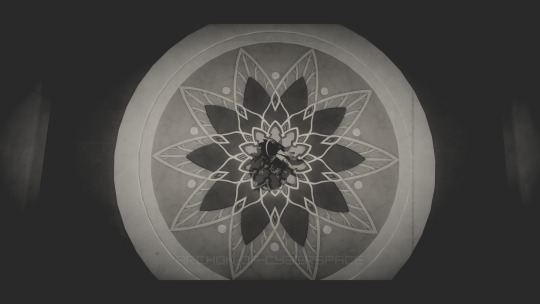
Candace proudly wears gilded ankh on her neck. This symbol in Ancient Egypt found its use as a representative of eternal life. Alluding to femininity and prosperity, ankh could has been called a key of life and stood as a metaphorical bridge between mortal and divine realms. A person bound so strongly to her people past, present and future is rare to find indeed, what makes the guardian of Aaru Village more unique.
Coming back to her connotations with bennu (gray heron), I must point out bird's presence on Candace's shield and back.
My shield? Well, according to what people outside the village say, it has the blessing of bennu. With this shield in hand, all the grains of sand are my eyes and ears, and the desert is ready to do my bidding... Their imaginations can get a little carried away sometimes. But anyway, that aside, the main thing for me is it always works a charm.
What if those people are partially right? While I understand woman's annoyance with escalated rumors, I'd like to think a greater, heartwarming motive hides within shield ornaments. Candace faithfully serves Aaru Village and in return, gods themselves watch over her. In battle, she screams prayers — so far, seems they're listened and answered to (as Candace performs excellently on field). Everyone needs moral support sometimes.
Besides, Candace's pectoral — brooch on her back — looks suspiciously close, yet simplified, to this:

Source: Pectoral of Horus with Sun-disk. From the Tomb of Tutankhamun (KV62), Valley of the Kings, West Thebes. Now in the Egyptian Museum, Cairo.
I dare to say, Candace is not only a personal favorite of mine — she's personal favorite of King Deshert. Truly unexceptional character.
Part 2 is here.
15 notes
·
View notes
Text
Cleopatra in Space Review
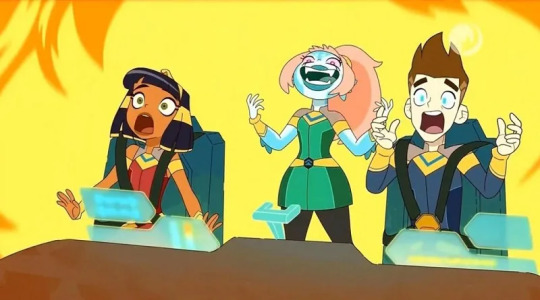
The mythology and history of Cleopatra, pharaoh of Egypt, has often been a topic in popular culture, from Hollywood films, webcomics like Everywhere and Nowhere, and mature animated series such as Clone High. This year, a new show, titled Cleopatra in Space, tapped into those myths and stories and began streaming on NBCUniversal’s new streaming service, Peacock.
Reprinted from Pop Culture Maniacs, my History Hermann WordPress blog on Jan. 5, and Wayback Machine. This was the second article I wrote for Pop Culture Maniacs. This post was originally published on December 22, 2020.
The animated series is based on a graphic novel series of the same name by Mike Maihack, with Doug Langdale and Julia “Fitzy” Fitzmaurice as showrunners. As a fan of various animated series, especially those with sci-fi elements, this series drew me in, even though it’s aimed toward younger kids, rather than young adults or mature adults over age 18. Egyptian themes and mythology are interwoven throughout the show’s imagery and music, composed by Jay Vincent and Ryan Lofty.
The series begins with the premise that brown-skinned Cleopatra “Cleo,” voiced by Lilimar Hernandez, a rambunctious teenage princess in Ancient Egypt, touches a tablet, which sends her 30,000 years into the future. She enters the Nile Galaxy, where she is considered the “savior” to defend the galaxy from the evil clutches of Octavian (voiced by Jonathan Kite) and attends an intergalactic high school on a planet, Mayet, governed by a council of talking cats. Lilimar also sings the theme song, “Written in the Stars,” which opens every episode.

The show’s first season, which is 13 episodes long, begins Cleo’s adventures with her friends Brian (voiced by Jorge Diaz) and Akila (voiced by Katie Crown), and her mentor, Khensu. Cleo is shown to be sometimes brash, dislikes authority, and likes to do her own thing. However, she also respects Khensu (voiced by Sendhil Ramamurthy) and supports her friends, apologizing if she made a mistake or overstepped. Unlike other shows where the protagonist wants to talk rather than fight, she fights the robotic soldiers of Octavian, destroying them repeatedly, using futuristic weapons like laser guns and plasma staffs. At the same time, she is a relatable character, is resourceful, and can go into action as needed, not even needing to plan. She, Brian, and Akila form a team, which go on wild adventures, whether on Mayet or in the Nile Galaxy, fighting space scavengers, space butterflies, robotic dragons, or angry ex-cons who work at a space hotel. While there are serious moments, the show is filled with comedic moments. Like other animations, teamwork and friendship are emphasized.
Cleopatra in Space has compelling characters and stories, and various sci-fi themes, like time travel. Apart from Maihack confirming Cleo as having attention deficit hyperactivity disorder (ADHD) in the graphic novels, which means that she would have the same characteristics in the animated series, Brian is shown to have social anxiety and Akila as a busybody who enjoys school. Specifically, Akila, unlike Cleo, who detests school, likes to study in libraries and is very gregarious. Cleo is further shown to have an academic rival, who is unique to the animated series, named Callie (voiced by Kari Wahlgren) and Zaid (voiced by Xolo Maridueña), a so-called “bad boy” who Cleo has a crush on. Additionally, the episode “Quarantine” has a lot of parallels to the current COVID-19 crisis, as Cleo ends up infecting the whole school campus with a virus from another planet after she ignores Khensu’s warning to quarantine. However, licensing issues have prevented it from being added to Peacock.
Currently, half of the show’s second season, six episodes, are listed on Peacock for streaming. This season begins with Cleo getting her own animal companion named Mihos, like similar companions in other animated series: Kero in Cardcaptor Sakura, Amaru in LoliRock, Luna in Sailor Moon, and Nut in Magical Girl Friendship Squad. The mystery of Octavian deepens as Cleo and her team tries to search for the UTA Tablet, while Zaid is expelled by the council. Like season one, there are many sci-fi and fantasy vibes, including simulated realities and futuristic technology. The importance of self-worth, accepting who you really are, and controlling your ego, are major points of these episodes, including when Brian employs an A.I. named Cyrano (voiced by Greg Cipes) to help him become more popular. Furthermore, at times Cleo begins to distance herself from her friends, while at others she plays matchmaker between Brian and Akila, whose romance expands during these episodes, and tries to establish herself as the team leader. In one episode, “School Break,” the show’s first confirmed LGBTQ characters are introduced: Theoda (voiced by Cissy Jones) and Pothina (voiced by Kari Wahlgren), the mothers of Akila.

If the show is renewed for a third season, after the second half of season 2 is added to Peacock, hopefully, the show improves moving forward. For one, the show could have more LGBTQ characters other than Theoda and Pothina. While Cleo and her friend Akila, who are roommates, do kiss each other in the episode “Do-Over,” it is clearly shown to be a “friendship kiss,” rather than a romantic one. Any same-sex pairings, either of Brian and Zaid, Akila and Cleo, or Cleo and Callie, some of which are favored by those in the small fandom for the show, are unlikely in the upcoming season, due to the emphasis on Brian and Akila as a would-be couple, and Zaid and Cleo are shown to have feelings for one another. The show could further benefit from re-casting the voices of brown-skinned characters, like Lakshmi and Yosira, so they are voiced by people of color rather than White actors like Kari Wahlgren.
If Cleopatra in Space is a success, it may result in more animated shows from DreamWorks are added to Peacock in the future, instead of on Netflix, like most animated shows from the company. However, due to the lack of promotion by DreamWorks and Peacock of the show on Twitter, and in general, there is a possibility that the show will be canceled after the second half of season two is added to Peacock. In the end, the show is fun, exciting, and can be enjoyed by everyone, worth watching in its entirety.
Cleopatra in Space is available on Peacock for streaming
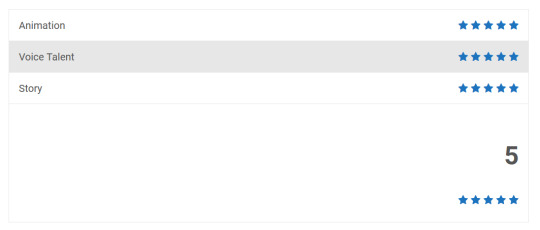
© 2020-2023 Burkely Hermann. All rights reserved.
#cleopatra in space#dreamworks#lilimar hernandez#lilimar#egypt#mike maihack#jonathan kite#magical girls#quarantine#covid 19#adhd#lesbians#lgbtq#peacock#hulu#greg cipes#cats
17 notes
·
View notes
Text
Moon correspondences
Zodiac: Cancer
Day: Monday
Runes: Isa, Laguz
Celebrations: Beltane, Imbolc, Lughnasadh, Samhain
Element: Water
Colors: Blue, Gray, Green, Orange, Silver, White
Numbers: 2,3, 9, 13
Tarot: Chariot, High Priestess, Moon
Trees: Birch, Olive, Palm, Rowan, Wllow
Herbs: Bergamot, Blackberry, Gardenia, Grape, Iris, Jasmine, Lemon Balm, Lily, Poppy, Rosemary
Metal: Silver
Gemstones & Minerals: Agate, Angelite, Aquamarine, Beryl, Calcite, Herkimer Diamond, Moonstone, Morganite, Opal, Quartz, Sapphire, Selenite, Turquoise
Sea Minerals: White Coral, Moon Snail, Mother of Pearl, Pearl
Goddesses: Aine, Aphrodite, Ariadne, Arianrhod, Artemis, Cerridwen, Diana, Freyja, Hecate, Ishtar, Isis, Juno, Luna, Nanna, Persephone, Rhiannon, Sedna, Selena, Spider Woman
Gods: aegir, hermes, horus, janus, jupiter, khensu, shiva, thoth
Magical: fairies, mermaids
Angel: gabriel
Animals: bear, cat, cattle, dogs, elephant, fox, goat, hare, leopard, otter, pig, rabbit, tiger
Birds: crane, crow, cuckoo, ceron, ibis, nightingale, peacock, turtle, moth
Mythical: dragon
Intentions: action, agriculture, animals, balance, beginnings, change, creativity, cycle, darkness, death, divination, dream work, emotions, endings, family, fertility, growth, guidance, healing, imagination, inspiration, loneliness, love, magic, manifestation, negativity, power, protection, rebirth, secrets, selfwork, sorrow, spirits, wisdom, witches

15 notes
·
View notes